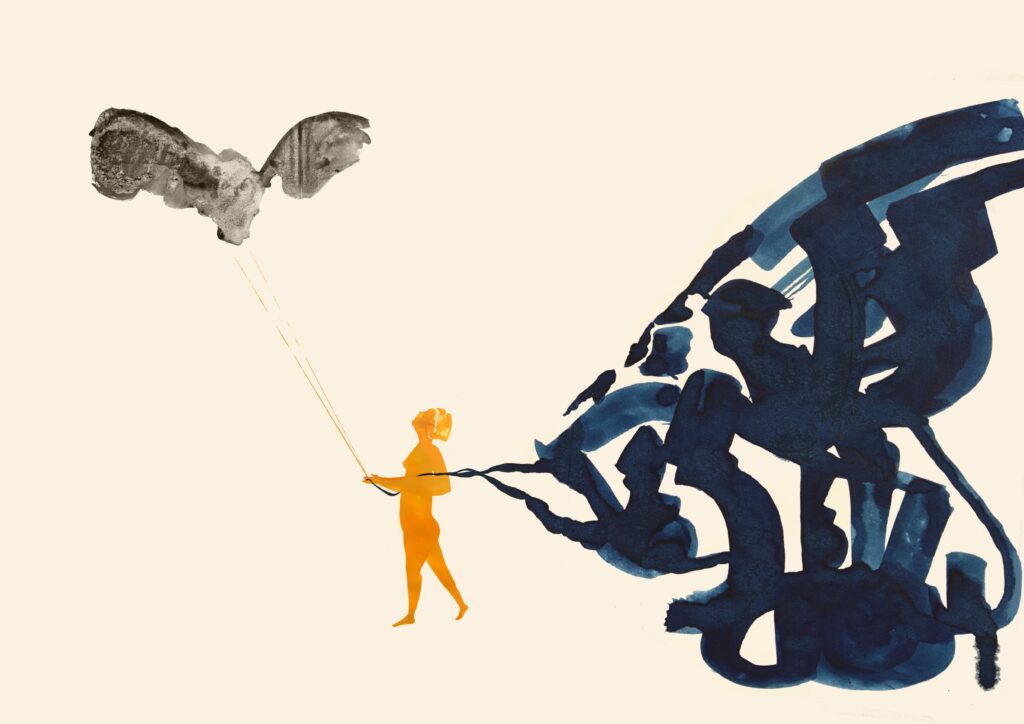
“Only the story can continue beyond the war and the warrior … It is the story, not the others, that saves our progeny from blundering like blind beggars into the spikes of the cactus fence. The story is our escort; without it, we are blind.”
– Chinua Achebe, Anthills of the Savannah
History, according to Ambrose Bierce, is “an account mostly false, of events mostly unimportant, which are brought about by rulers mostly knaves, and soldiers mostly fools.”
There is a piercing truth to Bierce’s definition. History is often taught through a series of dates, names and facts; none of which give anyone a real sense of what it was like to be alive in a given time.
Chinua Achebe, who became one of Africa’s most well known modern writers said that “until the lions have their own historians, the history of the hunt will always glorify the hunter.”
Through his fiction, he wanted to decolonise the narrative about Africa, a history which had mostly been told by Westerners, with all their bias and racism. Those who hold the power over the narrative, he commented, can arrange stories about others as they like. The same goes in corrupt, totalitarian regimes that exercise power over others.
While many of us will agree that History can no longer be told from one single perspective, in a one-dimensional way, it still holds a place of importance in the affairs of present day politics, and often (ill-)informs decisions made about the future.
So can we look at History differently? And what role should it have? We’re not speaking here about what History is, is not, or should be, rather who can help us understand History and its multidimensionality. This is where the role of the artist is crucial. Artists, sometimes referred to as the guardians of a culture, document and reflect the times they are in, they might depict a moment of History as a sort of time capsule.
Artists can communicate what is often missing from the official historical narratives, namely, what people felt like in a given time period.
Writer and Philosopher Irish Murdoch said that one of the motives for making art was to give shape to what is formlessness. Taking inspiration from Plato, she suggested that art was mimesis, meaning, ‘imitation,’ or rather ‘re-presentation’ of the world. And good art, she said, was anamnesis, meaning ‘memory’ of what we did not know we knew. What she meant by that was that art was “about the world, it exists for us standing out against a background of our ordinary knowledge. Art may extend this knowledge but is also tested by it.”
Understanding the feelings that people may have had in a given time may also awaken our own perceptions, be they, as Murdoch suggested, memories we did not know we had, or those we may have chosen to forget. And while what this awakens may not always be welcomed, it does lead us to see the humanity in others, therefore making us more compassionate.
In countries where the hold on History is tightly controlled, the role of the artist is even more crucial. Chinese Painter, Shen Jiawei, says that the role of the artist is to “reveal historical truths” and “correct the wrongs.” Art as a form of dissent can also create links with and between people and nations.
Ai Weiwei, another contemporary Chinese artist, is mostly known for his art as a form of activism, often targeted at his home country. One of his projects, which in part, led to his arrest, imprisonment and the destruction of his studio in China was an installation made out of nine thousand children’s school backpacks representing the thousands of children who died in the 2008 earthquake in Sichuan due to shoddy engineering, something the Chinese authorities wanted to be kept hidden.
Whether as a form of dissent, or simply as a form of documenting, intentionally or not, the artist – and art – allows us to become more than just witnesses to history, we become participants in it, or as Nina Simone said, we shape and mould a country, rather than be moulded by it.
“An artist’s duty,” Simone said, “is to reflect the times. I think that is true of painters, of sculptors, poets, musicians. As far as I’m concerned it’s their choice, but I choose to reflect the times and the situations in which I find myself. That to me is my duty. And at this crucial time in our lives, when everything is so desperate, when every day is a matter of survival, I don’t think you can help but be involved.”
Words, Veronica Yates and illustration, Miriam Sugranyes
See also: The Role of the Artist / The Artist as Translator/ Collective storytelling / Seeing with New Eyes
For references and further resources, visit our inspiration page.
Meet the Artists
Chinua Achebe (1930 – 2013) was a Nigerian author whose fiction helped to revive African literature and to rewrite the story of a continent that had long been told by Western voices. His first novel, Things Fall Apart, published in 1958, would become a classic of world literature and required reading for students, selling more than 10 million copies in 45 languages. The story was inspired by the history of his own family, part of the Ibo nation of southeastern Nigeria, a people victimised by the racism of British colonial administrators and then by the brutality of military dictators from other Nigerian ethnic groups. This novel gave expression to Achebe’s first stirrings of anti-colonialism and a desire to use literature as a weapon against Western biases, something he could continue in subsequent novels. [Source: Hopscotch Reading Room]
Irish Murdoch (1899–1985) was an Irish-British writer and philosopher best known for her novels about good and evil, sexual relationships, morality, and the power of the unconscious. For some time, Murdoch’s influence and achievements as a philosopher were eclipsed by her success as a novelist, but recent appraisals have increasingly accorded her a substantial role in postwar Anglo-American philosophy, particularly for her unfashionably prescient work in moral philosophy and her reinterpretation of Aristotle and Plato. [Wikipedia]
Shen Jiawei was born in Shanghai in 1948. Largely self-taught, he became a well known artist in China in the mid 1970s during the Cultural Revolution era. His oil painting Standing Guard For Our Great Motherland (1974) became an icon in those years and was later shown in New York at Guggenheim Museum in 1998 and Asia Society Museum in 2008. He studied in the Central Academy of Fine Arts in Beijing from 1982 to 1984, and worked as a professional artist in Shenyang. He emigrated to Australia in 1989 after he was compelled to leave because he painted heroes of the Chinese nationalist movement. [Art Atrium, Wikipedia]
Ai Weiwei (1957) is a Chinese contemporary artist, documentarian, and activist. He grew up in the far northwest of China, where he lived under harsh conditions due to his father’s exile. As an activist, he has been openly critical of the Chinese Government’s stance on democracy and human rights. Ai Weiwei emerged as a vital instigator in Chinese cultural development, an architect of Chinese modernism, and one of the nation’s most vocal political commentators. After being allowed to leave China in 2015, he lived in Berlin, Germany, in Cambridge, UK, and since 2021 in Portugal. [Wikipedia]
Nina Simone (1933 – 2003), was an American singer, songwriter, pianist, and civil rights activist. Her music spanned styles including classical, folk, gospel, blues, jazz, R&B, and pop. She was considered one of the most extraordinary artists of the twentieth century, an icon of American music. She was the consummate musical storyteller, a griot as she would come to learn, who used her remarkable talent to create a legacy of liberation, empowerment, passion, and love through a magnificent body of works. [Wikipedia, Artist’s own website]
